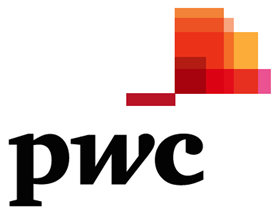In the last 10 years, responsible investment has evolved from being a primarily exclusionary approach to one focused on identifying companies that can effectively manage ESG risks and opportunities. PRI reporting data and conversations with investors suggest that today, ESG factors represent an important – and growing – part of client engagement for many investors worldwide.
At some point in the future, a significant proportion of currently external costs such as environmental damage or social upheaval might be forced into companies’ accounts. The uncertainty surrounding the timing and extent of this internalisation is a critical component of the overall risk landscape facing investors. There are various ways that ESG factors can become material, both suddenly and over a period:
- Committing to achieve the SDGs by 2030 will see many governments need to introduce new regulations and policies that will internalise previously unaccounted costs, e.g. substantial emission pricing or taxation to address climate change, or the introduction of emission standards for vehicles.
- Poor operational management or internal control might lead to events that destroy value, such as BP’s Deepwater Horizon incident in 2010.
- Changing consumer preferences can drive business away from unsustainable companies.
External reporting and assurance on ESG risk processes and responsible investment data is also gaining traction. Yet, assurance providers have noted that investors (and clients) do not always agree on which investment decisions and financial products are deemed sustainable. The SDGs and underlying targets can help to address this misalignment by providing a framework for a common way of referencing contribution to a more sustainable world, and thus strengthen investors’ ESG risk frameworks.
Many investors across Europe and North America have already started looking at ways to use the SDGs as a risk management tool and as a source of common language around ESG risks that can affect different industries, geographies and asset classes.
Developing SDG-focused initiatives
While negative and positive screening have become increasingly sophisticated in the last decade, the SDGs provide a new opportunity to measure the ESG risk companies bring to the portfolio alongside their sustainability impact on the real world. Tools to benchmark corporate performance against the SDGs, as called for by Aviva Investors in the UK International Development Committee’s first report, could be transformational.
One of the first initiatives to be released, which could pave the way for other tools, is the MSCI ESG Sustainable Impact Metrics. MSCI has grouped the 17 SDGs into five themes – basic needs, empowerment, climate change, natural capital and governance – under which they have developed a detailed taxonomy of products and services offering solutions. Companies’ revenue exposure to these products and services has been estimated, and investors are offered the option to apply minimum ESG standards, to minimise exposure to negative impacts and maintain governance standards.
Investors are also developing SDG-based scoring methodologies. Mirova, the responsible investment division of Natixis Asset Management, has developed a scoring methodology to determine companies’ contribution to the SDGs and exclude companies or increase allocations accordingly.
“The SDGs buttress the legitimacy of our engagement work. When we talk to the companies we invest in on the topic of water, human rights or climate change, to name a few, we can now also point to the fact that the 193 countries of the United Nations affirm that action on these issues is of critical importance to sustainable economic development worldwide”.
Carly Greenberg, CFA, Senior ESG Analyst, Walden Asset Management
A risk compass for alternative asset classes
It can be difficult to navigate the ESG risks involved in investing beyond traditional equity and fixed income, especially because well-known and well-tested risk management processes such as negative, positive and bestin- class screening do not apply. From infrastructure to real estate to commodities, alternative asset classes come with specific risk profiles, including on sustainability.
The SDGs can act as a much-needed risk compass in these broad and fast-growing markets. While some links can appear relatively straightforward (for instance between commodity hedging and SDG 2: End hunger, achieve food security and improved nutrition and promote sustainable agriculture), more research is needed to ensure that all potential ESG issues arising from investment practices are accurately mapped to the SDGs and to their underlying targets. For some asset classes and specific contexts, e.g. investing in private equity in developing countries/emerging markets, due diligence methodologies could be designed that take the SDGs and their targets into account.
Taking engagement to the next level
Investors have traditionally understood ESG engagement as either a tool of (ESG) risk management (i.e. as a way to make sure ESG risks are adequately managed by companies) or as compliance-driven (i.e. an effort to improve business conduct and bring a company back to compliance after they showed failure to uphold certain ESG standards). In this way, ESG engagement has usually been reactive rather than proactive and focused on the current, specific risks faced by a particular company as a result of negative media attention or whistle-blowing.
Several investors are already using the SDGs to bring their risk discussions with companies to the next level. In the past couple of years, we have seen a rising trend of engagement – on issues such as climate change and human rights – that goes beyond fixing a specific deficiency to working together with companies to find long-term solutions and build better practices. The notions of risk and performance have become broader, and the widely-endorsed SDG agenda gives investors new language and processes to drive ESG engagement.
Produced in collaboration with PwC
Downloads
The SDG investment case
PDF, Size 2.83 mbEl enfoque de inversion en los ODS
PDF, Size 1.66 mb
The SDG investment case
- 1
- 2
- 3
- 4
- 5
- 6Currently reading
Micro risks: A risk framework
- 7














